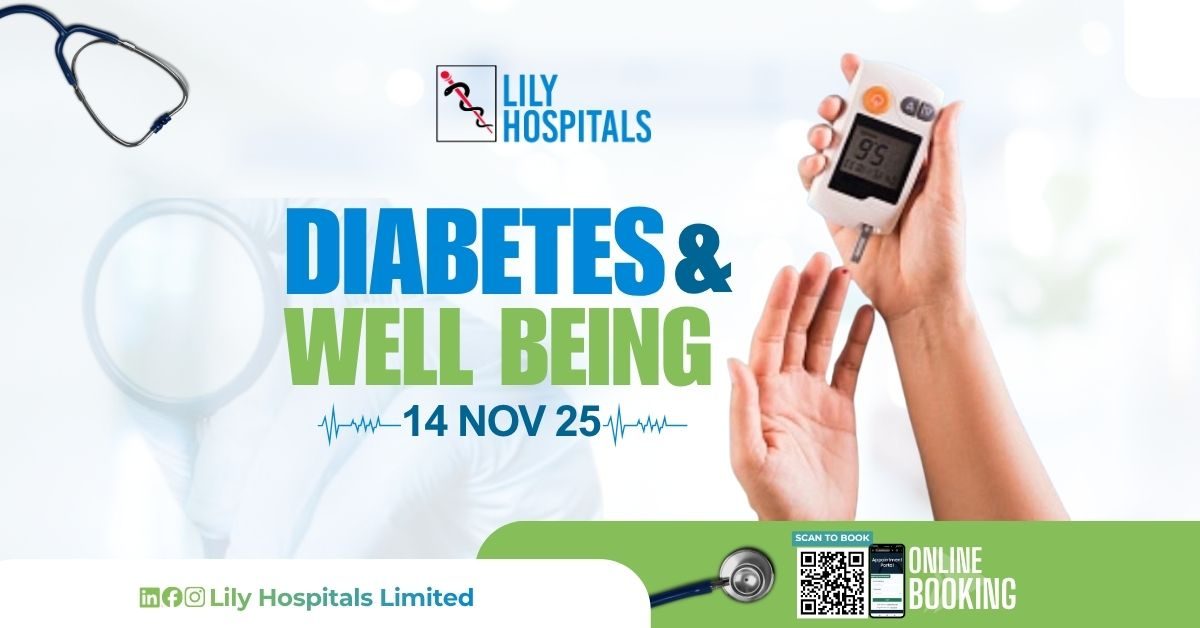
Diabetes is one of the fastest-growing health conditions in the world, yet many people still don’t realize they have it until serious complications set in. It can start quietly—persistent tiredness, frequent urination, unusual thirst, or slow-healing wounds—and gradually affect major organs like the heart, kidneys, eyes, and nerves. The good news is that diabetes is manageable, and in many cases, preventable when detected early.
In this guide, we break down everything you need to know about diabetes—from what causes it, to the warning signs you should never ignore, and the treatment options that help you live a healthy, fulfilling life. Whether you’re trying to understand your own symptoms, supporting a loved one, or simply learning how to stay healthy, this article gives you clear, medically accurate information you can trust.
What is Diabetes?
Diabetes is a medical condition in which the body does not produce insulin, or does not effectively use the insulin it produces. This leads to blood glucose levels being consistently high.
In diabetes, one of these issues occurs:
- The body does not produce insulin
- The body does not produce enough insulin
- The body cannot use insulin effectively (insulin resistance)
This leads to excess glucose in the blood, a condition known as hyperglycemia, which over time can damage vital organs like the heart, kidneys, eyes, and nerves.
Let’s breakdown some terms:
- Glucose
This is a source of energy especially to the brain cells, and to other cells of the body. It comes from the food we eat, and from the liver which stores glucose.
Glucose is sucked up into the bloodstream, and it gets into the cells with the aid of insulin. Whenever your glucose level is low, the liver breaks down previously stored glucose (glycogen), and releases it into the body.
- Insulin
This entire process is carried out with the aid of insulin. It lets sugar enter the cells, and lowers the amount of sugar in the bloodstream. When the insulin does not carry out this function effectively, or doesn’t produce enough insulin: this is DIABETES.
What are the types of Diabetes?
There are several types of diabetes, but the main types are:
-
Type 1 Diabetes
This is a condition where the immune system destroys the cells in the pancreas that produces insulin. If you are living with this condition, you need to take insulin daily for survival. Children and young adults are often diagnosed with this condition.
-
Type 2 Diabetes
This is the most common type of diabetes. In this case, the body doesn’t use insulin properly, this is called insulin resistance. Also, the pancreas does not produce enough insulin. Being over weight, having a family history of diabetes puts you at risk of having this type of diabetes.
-
Gestational Diabetes
This type develops in some women during the period of pregnancy. Even though it goes away after childbirth, it increases your risk of developing type 2 diabetes in your later years.
-
Prediabetes
This is a condition where your blood sugar levels are higher than the normal level, but it’s not up to the point of type 2 diabetes. Unless adequate measures are taken, it can lead to type 2 diabetes.
Other types of diabetes includes:
- Type 3c diabetes
- Neonatal diabetes
- Latent autoimmune diabetes in adults (LADA)
- Steroid induced diabetes
- Cystic fibrosis related diabetes
- Maturity onset diabetes of the young (MODY)
- Wolfram Syndrome
- Diabetes insipidus
Symptoms of Diabetes
If you are experiencing any of the underlisted, you may be suffering from diabetes
- Frequent thirst: The body tries to replace lost fluids.
- Urinating more than usual: High glucose forces the kidneys to work harder, increasing urination.
- Increased hunger: Cells are not receiving enough glucose.
- Drastic weight lost
- Tiredness or weakness: Body cells are starved of glucose.
- Being irritable
- Blurry vision
- Wounds that heal slowly: Impaired circulation delays healing.
- Infections like gum, skin and vagina infection
- Numbness or Tingling in Hands/Feet
Causes of Diabetes
Each type of diabetes has the factors that lead to it.
Type 1 diabetes
Even though the exact cause of this is unknown, genetic and environmental factors play a major role.
Type 2 Diabetes
The following factors leads to the development of Type 2 Diabetes
- Sedentary lifestyle
- Obesity: especially fat around the abdomen, which increases insulin resistance.
- Family history
- Age: risk increases after age 45 (but rising in younger people due to lifestyle habits).
- Polycystic Ovarian Syndrome (PCOS)
- Gestational diabetes
- Prediabetes
- Hormonal conditions
- Poor Diet: regular consumption of sugary drinks, processed foods, fried foods, and excess carbohydrates.
- Unhealthy diet
- Medication: long term use of corticosteroids and other medications can lead to Type 2 diabetes
Type 3c Diabetes
This is caused by injury to the pancreas. The injury may be gotten from surgical procedures.
Complications of Diabetes
If diabetes is not properly managed, it can lead to other conditions like
- Heart attack
- Stroke
- Kidney damage
- Blurry vision
- Blindness
- Foot problem leading to amputation
- Liver damage
- Oral health conditions
- Skin conditions
- Mental health problems
- Hearing impairment
- Alzheimer’s disease
- Sexual dysfunction
- Nerve damage
Complications of Gestational Diabetes
For the mother with gestational diabetes, complications include:
- Preeclampsia: high blood pressure, high protein in the urine, and swelling in the legs and feet.
- Further gestational diabetes in future pregnancy
Complications in the baby
- Excessive growth and weight
- Low blood sugar
- Risk of developing type 2 diabetes later in life
- Death
How Diabetes Is Diagnosed
Our professionals use the following tests:
1. Fasting Blood Glucose Test
Check blood sugar after 8 hours of fasting.
2. Random Blood Glucose Test
Measures blood sugar at any time.
3. Oral Glucose Tolerance Test (OGTT)
Measures how the body responds to glucose over several hours.
4. HbA1c Test
Shows 2–3 months average blood sugar control.
Diagnostic Ranges
| Test | Normal | Prediabetes | Diabetes |
| Fasting Glucose | <100 mg/dL | 100–125 mg/dL | ≥126 mg/dL |
| HbA1c | <5.7% | 5.7–6.4% | ≥6.5% |
How is Diabetes managed and treated?
It can be managed through the following methods
- Blood sugar monitoring
Monitoring your glucose levels allows you to know how to manage diabetes daily. You can use tools like Glucometers and Continuous glucose monitors (CGM).
- Oral diabetes medication
- Insulin
- Exercise
- Diet
- Maintaining a healthy weight
- Stay hydrated
A note from Lily Hospitals
Diabetes may be a lifelong condition, but it does not have to take over your life. With early diagnosis, proper medical care, and healthy lifestyle habits, individuals living with diabetes can thrive and enjoy normal, active lives. Understanding the causes, symptoms, and treatment options empowers you to take control of your health—or help someone you care about do the same.
If you suspect any symptoms or have risk factors, the best time to get screened is now. Early detection saves lives. Visit us today.


